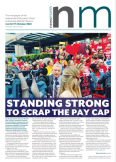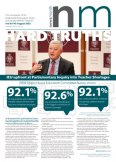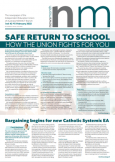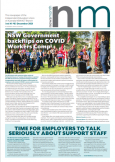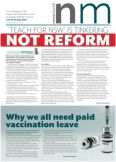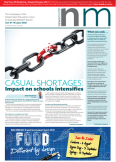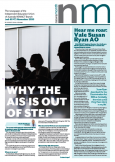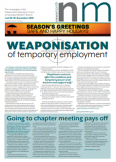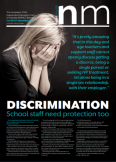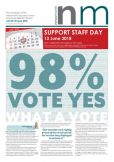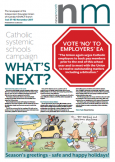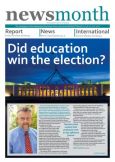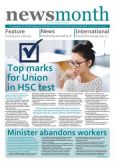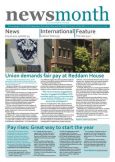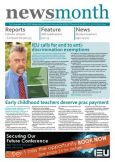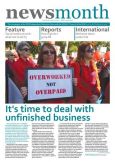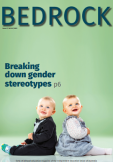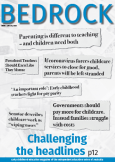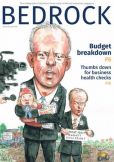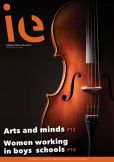Reviews mean business
Reviews of the teaching profession have been conducted every decade or so since the 1970s through teachers’ unions taking work value cases to the NSW Industrial Relations Commission. These cases assessed where the profession sat in relation to the rest of the community and the changing nature of teachers’ work. Each time, judges backed considerable catch-ups.
In 1970, it was a 21% to 24% salary increase; in 1980, it was 9.5% over nine months; in 1991, it was 9% to 13% and for principals and deputy principals it was 20% to 29% over seven months. In 2003-04, it was 12% to 19.5%.
There has not been a review since 2004 because in 2011, the NSW Liberal government under Premier Barry O’Farrell stripped the NSW Industrial Relations Commission of its autonomy: it no longer had the power to award pay rises above the state government’s salary cap. This effectively scrapped work value cases and capped public sector teachers’ wages, to which salaries in the independent sector are closely tied. So this latest review is long overdue.
The Gallop Report recommends a 10% to 15% increase to teachers’ salaries over the next two years.
Time and workload intensification
“There almost wasn’t a teacher who came before us or wrote a submission that didn’t go quickly to the clash between the time available to do the work teachers do and the other stuff you’ve been asked to do,” Lee said.
Teachers know what all this “other stuff” is, but let’s spell it out: excessive documenting of programs; data collection prioritised over teaching time; and implementing school or system initiatives such as data walls. And that’s before we get to curriculum churn, with another reform in the pipeline to be rolled out in an unmanageable timeframe.
Lee referred to the personalisation and “datafication” of learning, with teachers being required to upload data at every turn. If only this great trove of data were being used to shape resourcing for meaningful public policies such as supporting students with disability or closing the gap for Aboriginal and Torres Strait Islander students, Lee said, “but that’s less evident”.
Australian teachers are consistently judged against overseas standards; however, Australian teachers are not afforded the same teaching conditions as their international colleagues – far less time for planning and collaboration with other teachers is provided for.
“In Singapore, the teachers work hard, but there’s much more time built in so they can work with each other, plan and monitor,” Lee said. “So the face-to-face teaching they do is more productive, more carefully prepared for – in other words, better teaching – because of that other work.”
The Gallop Report recommends at least two more hours of release time for both primary and secondary teachers, to be introduced over the next two years. It also recommends the NSW Government abandon its unreasonable plan to introduce a new curriculum for all students by 2024.
Toll of technology
The most dramatic change the profession has experienced in the past two decades is the rapid evolution and adoption of technology.
It's not just the learning management systems and ‘datification’, Lee said. “It’s the bring-your-own-device policy, which brings the opportunity for lots of students to come in with lots of different devices and platforms.
“And that’s when the student actually has a device and you don’t have to spend your time in the classroom trying to find one, and you end up teaching to the lowest common denominator because that’s the only way you can get through the class.”
The almost overnight shift to online learning during the pandemic lockdown of 2020 intensified teaching workloads, but this has not been recognised in salaries or conditions, and in some cases has been met with a pay freeze.
Accreditation agonies
Throughout Australia, institutes of teachers or colleges of teachers were established around 2004, along with teacher accreditation schemes in NSW.
“It was done poorly in a number of ways,” Lee said. He describes teacher accreditation authorities as “artificial entities that are in effect employer authorities”.
Now, he says, besides the NESA requirements, employers overlay their own processes, complicating the work in schools for teachers – “and this was something that didn’t happen in any other state”.
Progress from Graduate Teacher to Proficient Teacher is problematic thanks to excessive casualisation and temporary appointments. Some teachers have reached their fifth or sixth year of teaching without having progressed, and the delay has significant salary implications.
“In one case, a teacher who was giving us evidence said the loss of time was worth almost a deposit on a house for her,” Lee said.
The IEU has spoken out many times about how the accreditation system needs reforming, and the Gallop Report is unequivocal: “We’ve made a recommendation for the abolition of Teacher Accreditation Authorities,”Lee said.
Health and wellbeing
Schools are not separate from their surrounding communities. Marriage breakdowns, family law issues, unemployment, poverty, and an alarming spate of student suicides all take their toll on students, teachers and support staff.
The petition instigated this year by a former Kambala student has lifted the lid on sexual assault among students in Sydney independent schools.
In the face of this, there is a “heartbreaking” shortage of school counsellors, Lee said. He talked about one counsellor in a regional area who was spread so thin across five schools that he couldn’t do his job. The path to burnout grows ever shorter.
The Gallop Report recommends an urgent increase in school counsellors and calls for a ratio of one counsellor to every 500 students by 2023.
Caps off
A substantial pay increase for teachers, in recognition of the intensification and changing nature of their work, is a key recommendation of the Gallop Report.
IEUA NSW/ACT Branch Secretary Mark Northam drew attention to the figure of 0.3%, the meagre raise granted to public sector workers, including HSC markers, for 2021.
“We get caught in the same net,” Northam warned. “If it persists, that will be the signal it’s time for unions to act.”











